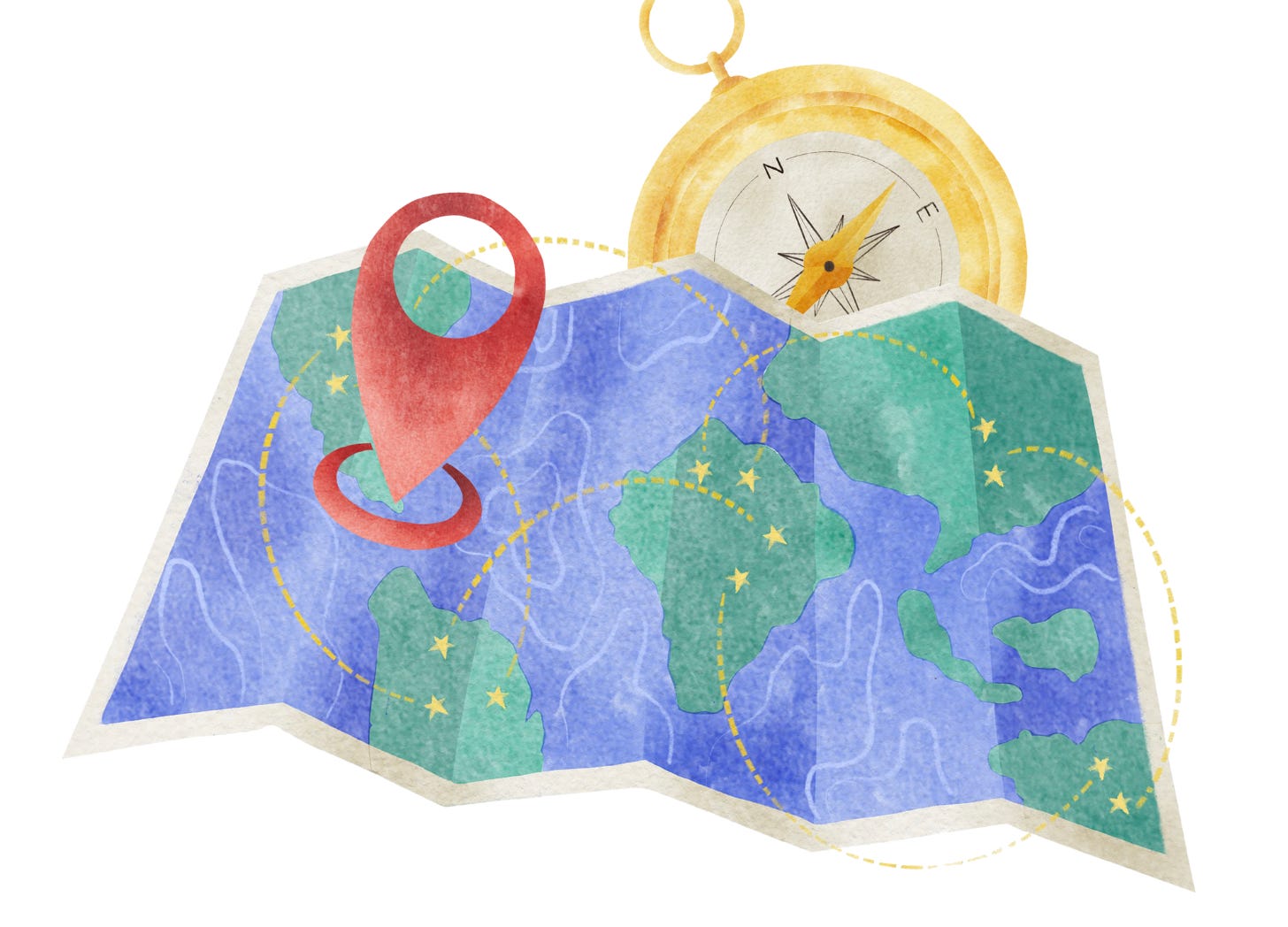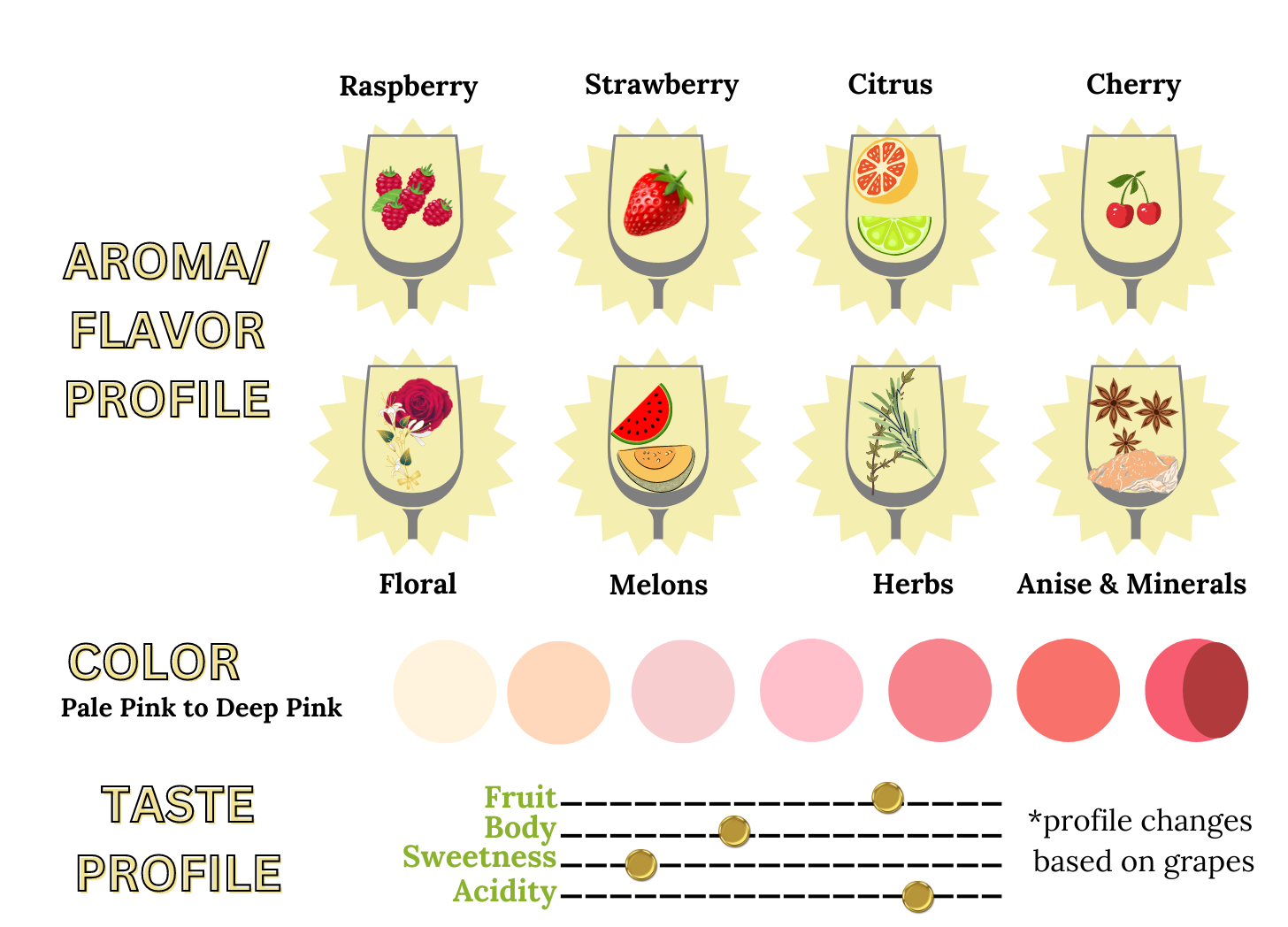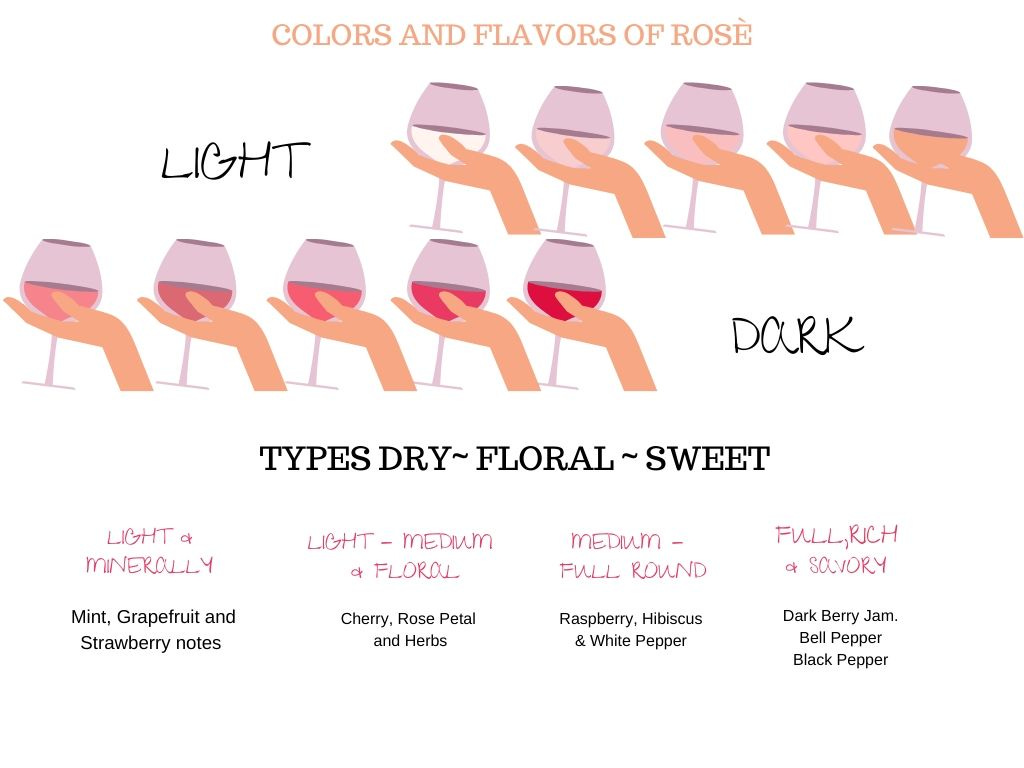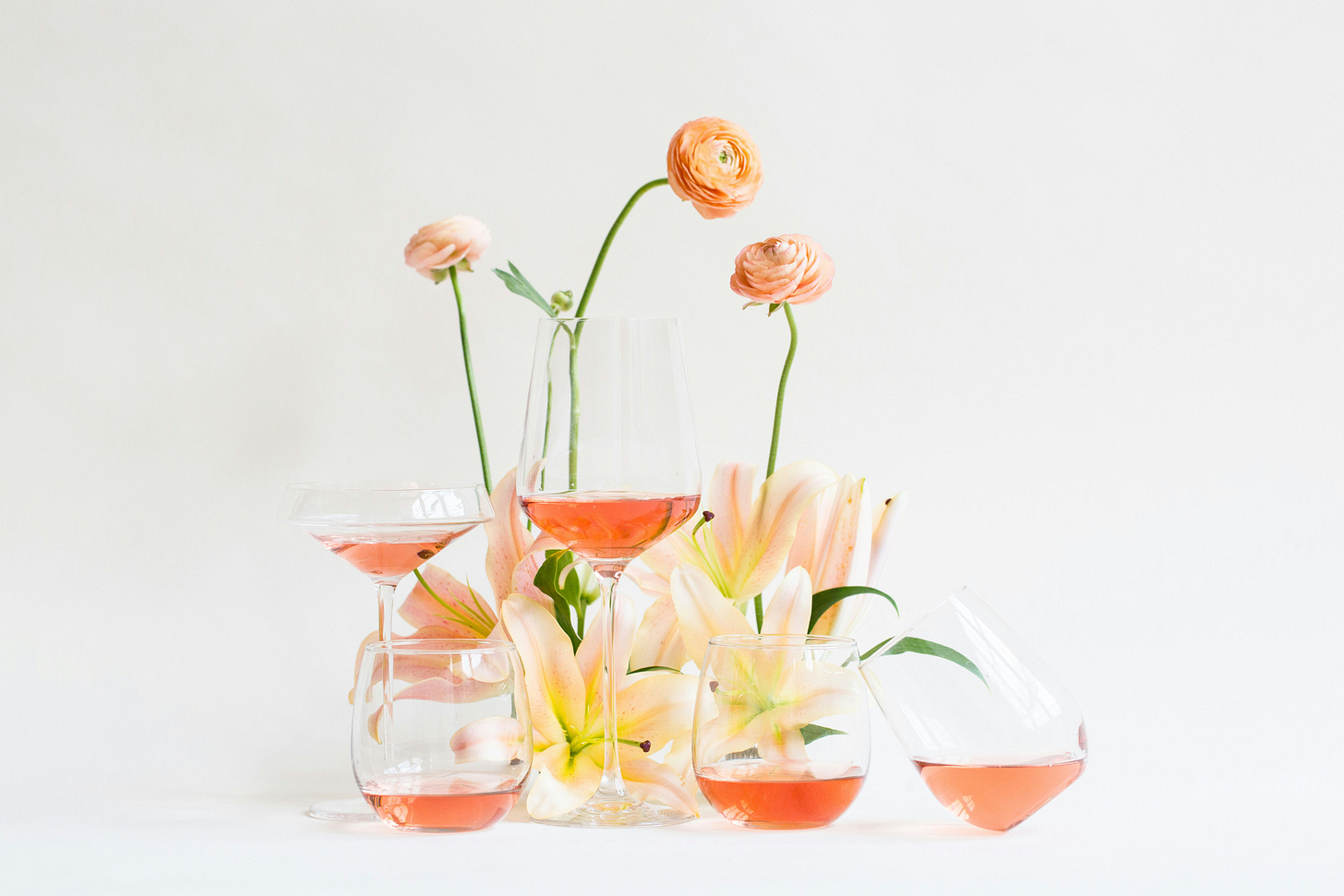Choose Your Own Wine Adventure: Rosé
The Famed Pink Drink
Can you guess what’s next in our adventure series? That's right, it's rosé time! But what exactly is rosé, and how did it earn its place in the esteemed world of wine? Since it's not a varietal, we’ll be discussing the grapes and methods used to make rosé, the global regions the iconic pink drink hails from and its “50 shades of pink” profile.
Anyone who knows Jaime well, will tell you that she lives on a soapbox shouting “ROSÉ IS A VERSATILE WINE THAT CAN BE ENJOYED ALL YEAR LONG!” Here we’ll give you the rundown on the drink that has become a pop-culture phenomenon with coined phrases such as “Rosé All Day!” and “Brosé”!
Profile
Rosé wine, with its delicate hue and refreshing taste is a global wine made from red/white grapes with the birthplace of Provence, France. It has a wide array of styles, from bone-dry to slightly sweet, and shades ranging from pale salmon to vibrant pink (depending on the varietal, producer and region). It can also convey notes and aromas of red and dark berries, strawberries, raspberries, cherries, earth, plum, watermelon, peach, floral bouquets of honeysuckle and roses. Here’s a list of common varieties used to make rose such:
Grenache (Garnacha)
Cinsault
Pinot Noir
Pinot Meunier
Syrah
Mourvèdre
Sangiovese
Zinfandel
Negroamaro
Montepulciano
Style
Before we get into the different styles of rosé, we must first discuss the different winemaking techniques used as each method produces a rosé with different flavor profiles and characteristics. At its essence, rosé is a type of wine that incorporates some of the color from grape skins, but not enough to qualify it as a red wine. Unlike red wines, where the grape skins are left in contact with the juice for an extended period during fermentation, rosé wines typically have a shorter maceration period, resulting in a range of pink hues. Take a look at the techniques used….
1. Blending: This method involves mixing red wine with white wine to achieve the desired pink color. This technique is less common and typically not allowed in many traditional wine regions, except for Champagne, where blending is used to create rosé Champagne.
2. Maceration: The most common method for making rosé involves allowing the grape skins (usually red grapes) to have brief contact with the juice. The longer the contact, the deeper the color. After a short period, the skins are removed, and the wine continues to ferment without them.
3. Saignée: (pronounced SON-YAY) This technique, known as "bleeding," involves siphoning off some of the juice from a batch of red wine in its early stages. The juice that’s removed is then fermented separately to produce rosé, while the remaining juice becomes a more concentrated red wine. That’s not all! The Europeans set rules and regulations in place to ensure quality, authenticity, and consistency in rosé production. Some of these key aspects include:
Appellation Regulations
Allowed Methods of Production
Grape Varieties
Color Standards
Labeling Requirements
Quality Designations
Enforcement and Certification
Regulatory Framework
Which leads us to the most popular styles of rosé from around the world celebrated for their distinct approaches to rosé winemaking, offering a diverse range of flavors, styles ….
Provence, France
Provence is considered the birthplace of rosé, and it’s renowned for producing some of the world’s most iconic and highly sought-after rosé wines. The region’s Mediterranean climate and limestone-rich soils create ideal conditions for growing the grapes used in their signature pale, dry rosés.
Tavel, Rhône Valley, France
Tavel is unique in that it exclusively produces rosé wines, known for their fuller body and deeper color compared to those from Provence. These wines are often more robust, with flavors of red berries and a hint of spice, making them a favorite for those who prefer a more intense rosé experience.
Navarra, Spain
Navarra is a key region for Spanish rosado, where Garnacha (Grenache) grapes are commonly used to create rosé wines that are vibrant, fruity, and often darker in color. The region’s innovative winemaking techniques have made it a leader in producing both traditional and modern styles of rosé.
California, USA
California’s diverse wine regions, particularly Napa Valley and the Central Coast, are known for their wide range of rosé styles. From the crisp, dry rosés of Sonoma to the sweeter White Zinfandel of Napa, California has become a major player in the global rosé market.
Puglia, Italy
Puglia, located in the heel of Italy's boot, is known for producing vibrant and flavorful rosé wines made primarily from the Negroamaro and Primitivo grapes. These wines are typically full-bodied, with a rich color and bold fruit flavors, reflecting the warm, sun-drenched climate of the region.
Bandol, France
Bandol, a small appellation in Provence, is famous for its rosé wines made predominantly from Mourvèdre grapes. These wines are known for their complexity, with flavors of ripe berries, citrus, and a distinct minerality, making them some of the most prestigious and age-worthy rosés in the world.
Other Styles
Rosé can also be made into sparkling wines often referred to “pink bubbly” or “rosé sparkling wine”. Check out the difference between sparkling rosé and prosecco rosé here.
By any other name
Rosé has many monikers with different regions.
France/South Africa/USA = Rosé
Spain/Portugal = Rosado
Italy = Rosato
Germany = Weißherbst and Roséwein or Rotling
Austria = Schilcher and Roséwein
Switzerland = Oeil-de-Perdrix
Greece =Ροζέ (Rozé)
Common Blending Partners
Viognier, Chenin Blanc and Chardonnay are sometimes blended with rosé to add complexity and lightness. Viognier adds aromatic floral notes and stone, Chardonnay adds body and texture and Chenin Blanc provides acidity and hints of apple and honey notes.
All in the Family
The roots of the historical connection between rosé wine and claret can be traced back to medieval times, specifically in the Bordeaux region of France. The term "claret" is derived from the French word "clairet," meaning "pale" or "light-colored." Historically, the English used the term "claret" to refer to pale-colored wines imported from Bordeaux. These wines, which included both rosé-like wines and light reds, gained popularity among the English nobility during the Middle Ages and became synonymous with luxury and prestige.
Where in the world is Rosé?
Rosé is internationally known so you can pretty much find it or a style of rosé wherever grapes are grown. However, the most well-known regions are:
France: (Provence, Loire Valley (Anjou, Sancerre), Tavel, Languedoc-Roussillon
Spain: Navarra, Rioja, Catalonia (Peñedes)
Italy: (Piedmont, Tuscany, Abruzzo, Sicily)
USA: (California, Oregon, Washington, Finger Lakes)
Portugal (Douro Valley, Alentejo)
Australia: (Barossa and Yara Valley, McLaren Vale)
South Africa: (Western Cape)
Argentina: (Mendoza)
Chile: (Central Valley)
Germany: (Pfalz, Baden Rheingau)
Greece: (Peloponnese, Macedonia)
Austria: (Burgenland)
Switzerland: (Valais)
New Zealand: (Central Otago, Marlborough)
Canada: (Niagara Peninsula, Okanagan Valley)
Hungary (Szekszárd)
Turkey: (Aegean region)
How to Buy It
The first step is to know what type of rosé you’re looking for — more French, more American or Italian or something completely different? Knowing the style will help you choose the right bottle. Regions that are more established will have more variety which can play a big role depending on your budget.
How to Serve It
Rosé wines are best served chilled but not ice-cold. The ideal serving temperature for rosé is typically between 45°F and 55°F (7°C to 13°C). Serving rosé too cold can mask its flavors and aromas, so avoid over-chilling.
Jaime personally likes to enjoy her first glass of rosé room temp as it allows her to capture its true aromas and notes before the chill. She finds it to be the best way to gauge if it's too acidic and unbalanced.
Some producers and wines we like
Jaime’s favorite rosés are:
Notorious Pink in South of France-love 100% Grenache
MiMi en Provence in Provence, France- Grenache, Cinsault, Syrah blend is the way to go when grabbing a bottle.
McBride Sisters Sparkling Brut Rosé in Aotearoa New Zealand — Mousse!
La Vielle Ferme Rosé in Luberon, France— of course the chicken wine is on the list, its easy-drinking!
Erica’s favorite is Randall Grahm’s Le Cerisier in Central Coast, CA, Casa Jipi Barbera Rosé in Valle de San Vicente, Mexico and Birichino Vin Gris in Central Coast, CA.
If you love it, try…
Beaujolais-Villages (Gamay) rosé, Barbera rosé, Aglianico rosé, Tempranillo rosé, Cabernet Sauvignon rosé, Tannat rosé, Carignan, Malbec rosé-these varieties are pleasantly fruity and refreshingly quaffable, offering the same aromas and notes as rosés from popular regions.
Fun fact
Tavel was Ernest Hemingways favorite and it also came to be known as “Rosé of the Kings, King of the Rosés” in the 17th century thanks to both Kings Louis XIV and Philip IV. Rosé is such a versatile, food-friendly, easy-drinking wine with many questions and myths tied to it that we unfortunately can’t cover it all in this newsletter…….BUTTTT, you can get more details of the famed pink drink in Jaime’s guidebook “Everyone Loves Rosé, They Just Don’t Know It!”
TL;DR
Rosé is a versatile and refreshing style of wine made from red grapes that gets its signature hues from contact with the juice for a short time. It’s easy to drink, ranges from dry, sweet to sparkling and pairs well with all types of food offering aromas and styles of red fruits, citrus and floral bouquets. It also should be enjoyed ALL YEAR LONG, not just seasonally :)!










